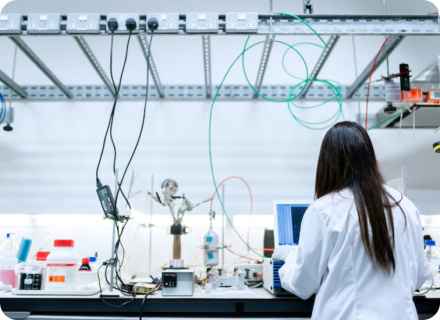Building Capacity for Action: The Cornerstone of Pandemic Response
The COVID-19 pandemic has starkly illuminated an existent, yet often overlooked, chasm in our public health systems and governmental response: the shortfall of tangible operational capabilities, including delayed response times, lack of coordinated action, and failure to execute preparedness plans effectively. The rampant spread of the virus, followed by its significant societal fallout, wasn’t primarily due to a lack of ideas or knowledge about pandemics. Instead, it laid bare an alarming shortcoming in our ability to execute the necessary, timely actions – a central pillar of “operational capabilities.” Operational capabilities refer to the tangible abilities and systems within a public health infrastructure that allow for immediate, coordinated, and effective response to health crises. This includes the capacity to act swiftly and decisively during emergencies, the ability to coordinate actions across different sectors of government, the strength of supply chains and logistics for distributing necessary resources, the robustness of systems for tracing and reporting disease transmission, and the preparedness to engage and empower communities in responding to health threats.
Learning from Fire Departments: The Need for Immediate, Decisive Action
When we look at our fire departments’ mode of crisis response, it’s clear that achieving success in pandemic management mandates immediate, determined action. Fire departments don’t merely provide advice; they spring into action swiftly and decisively in times of crisis. Rapid and effective action minimizes the impact of fires and is widely accepted in society, absent the adverse responses from lagging prolonged interventions that intrude on public life in recent pandemic response. Furthermore, fire departments are insulated from political decision making to ensure they can act autonomously and effectively in protecting the public’s safety. The model for effective public health systems needs to echo this; they cannot remain purely advisory. They need to embody the ability to act fast without being subject to, nor risking the popularity of, politicians – much like the emergency response mechanism of fire departments.
Contrastingly, our current public health systems and governments have traditionally not been structured to offer this direct, actionable capability. Hence, the spotlight should not only be on augmenting the ability to advise or plan, but more crucially, on the capacity to act decisively.
Community Involvement: The First Line of Defense
During a pandemic, the demand for swift action also translates into establishing robust response capabilities within communities, akin to the community-based infrastructure for firefighting. Empowering communities with effective containment capacities is vital, so they can efficiently respond and self-organize at the first sign of a threat.
Communities are often the frontlines in any crisis, akin to a fire or medical emergency. The initial response of community members, guided by their knowledge and capabilities, can set the trajectory, either mitigating or aggravating the situation, before professional responders arrive. These professionals must then adapt their response based on the groundwork laid by the community. Proactive, action-oriented community involvement can be the bedrock of an effective pandemic response, cultivating local resilience and bolstering national preparedness.
Creating Versatile Global Response Systems: A Proactive Approach
To support smaller-scale response, avoiding the need for larger ones, we need similarly action-oriented rapid global response systems, such as global networks of experienced disaster responders who can act quickly to provide on-the-ground support. Furthermore, what’s needed are flexible funding options for those areas affected, efficient utilization of available resources, a versatile public health workforce for tracing, identifying, and reporting transmissions, and an adept health risk communication system that builds public trust through tangible results.
Additionally, we need to develop exchange programs to help share knowledge and best practices. Such programs would promote collaboration and coordination among actors, while building the capacities of local partners to enable them to lead the response. This develops feedback for ongoing improvement that strengthens disaster risk reduction measures.
We also need infrastructural and logistical systems that can be used to respond quickly and effectively. This includes systems to identify relevant resources available in the affected areas and within the responding organizations, and flexible mechanisms for delivering these resources in an efficient manner. Additionally, we need to create policy frameworks that support global coordination of response efforts, with an eye to developing more effective approaches for responding to smaller-scale disasters.
Shaping the Future of Public Health: Building Rapidly Responding Public Health Systems, Fostering Innovation, and Ensuring Universal Access to Resources
This action-centric approach also necessitates institutional adaptability to foster social and technological innovation. From creating innovative transmission prevention strategies to rapidly adapting and deploying new treatments and vaccines, we must nurture institutional capabilities that can be swiftly mobilized. We must ensure that our public health infrastructure is resilient, inclusive, and equipped to support everyone, everywhere.
Crucially, we need to build the capacity to swiftly set up and mobilize infrastructures that guarantee universal access to preventive measures, vaccines, diagnostics, and treatments. Rather than just being reactive, as is often the case today, we must proactively design supply chains for robustness, optimize logistics for efficiency, and foster a fast, accurate network for information sharing. In practice, this means we should pre-establish long-term contracts with manufacturers and distributors for essential supplies, with provisions to ramp up production in crisis situations. Furthermore, we need to develop protocols for rapid deployment of resources and personnel in response to emerging information, thus minimizing the time between detection of a crisis and the response. In doing so, we can better prevent and manage future pandemic crises.
In summary, an effective pandemic response requires more than just knowledge; it necessitates action-oriented operational capabilities, on par with those of our fire departments. Without these tried and tested capabilities, any response risks being delayed, permitting crises to escalate further. Therefore, as we prepare for future pandemics, we must shift our focus from merely accumulating knowledge to actively building the capacity to act, making it politically easier to do so. This action-centric approach is not just the key to handling future pandemics; it forms the bedrock of successful public health systems capable of addressing a spectrum of potential crises.


